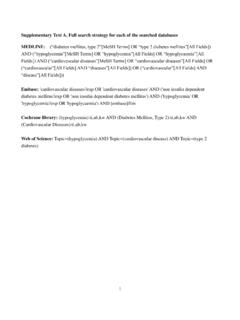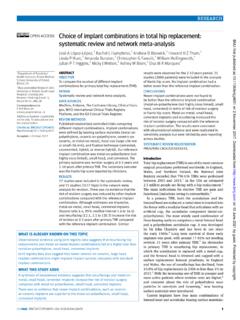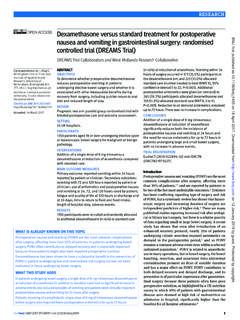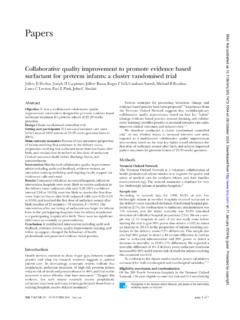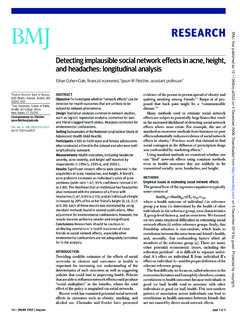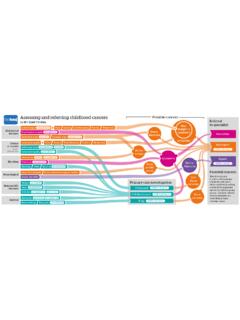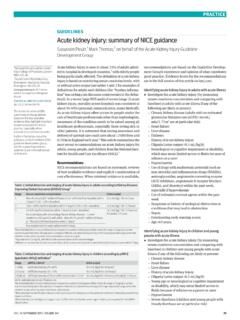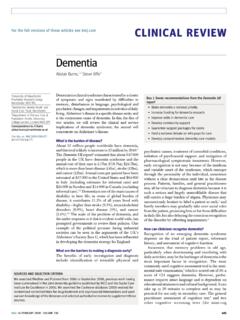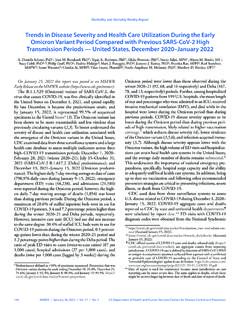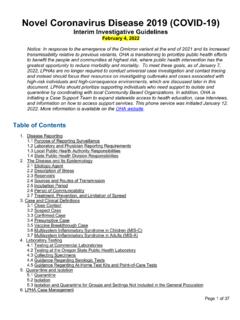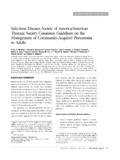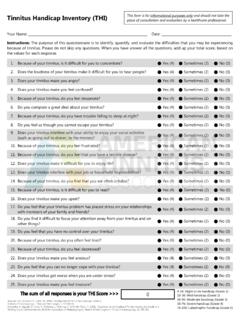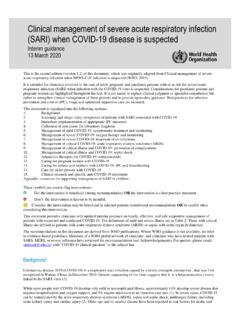Transcription of Testing for non-alcoholic fatty liver disease
1 Non-invasive liver screen (NILS)Undertaking a liver biopsy is a risky, potentially painful procedure. Non-invasive techniques can be used to assess the presence of both hepatic steatosis and to Hepatology if NILS tests yield positive results for: Consider non-hepatic causes for raised ALT:Hepatitis B or CImmunoglobulins raisedAutoimmune liver screen (Primary biliary cholangitis)High ferritin and high transferrin saturationLow caeruloplasminLow alpha 1 anti-trypsin proteinMuscle diseases, such as polymyositis, heavy exerciseThyroid diseasesCoeliac diseaseLiverultrasoundBlood testsTesting for non-alcoholic fatty liver diseaseVisual summaryThe term non-alcoholic fatty liver disease (NAFLD) encompasses a spectrum of pathologic conditions, ranging from non-alcoholic fatty liver (NAFL) to steatohepatitis (NASH), fibrosis, and cirrhosis.
2 This flow diagram offers a pragmatic approach to the diagnosis and monitoring of NAFLD in asymptomatic adult to general surgery if gallbladder or bile duct stones detected on imagingNAFLDGGT normalGGT raisedConsiderVitamin D de ciencyBone diseaseVaries with ageThird trimesterpregnancyRapidly growing adolescents have up to 2 fold increaseUltrasound confirms presence of hepatic steatosisConsider cirrhosis if:Spleen size increasedPlatelets lowINR highBilirubin highAlbumin persistently lowRefer to hepatologyUltrasound confirms presence of hepatic steatosisALT or ALP raisedNormal ALT, ALP, INR, and albuminConsiderhaemolysis if:Unconjugatedbilirubin highConsider Gilbert ssyndrome if:Conjugatedbilirubin <10 mol/LAnaemiaOnce NAFLD has been confirmed it is important to assess liver disease severity with assessment of liver fibrosisInvestigate severity of liver fibrosisAlthough biopsy is the most accurate way of staging fibrosis, it is usually reserved for patients who are most likely to have substantial fibrosis or where there is diagnostic uncertainty.
3 If available, the enhanced liver Fibrosis test (ELF) is preferred by NICE guidelines in the UK. If it is not available, use another non invasive test as recommended by European and American advicePatients with NAFLD can benefit from making heathier lifestyle choices. Offer education and advice irrespective of whether referral is needed or loss and physical activityEspecially if the patient is overweight or obeseConsider pioglitazone or vitamin E after consultation with specialists, if not with biopsy-proven NASHNAFLD may present with or without these commonly co-existing conditions. These are associated with increased severity of NAFLD and increased risk of liver fibrosisO er annual monitoring for patients being treated for diabetes, hypertension or with statins to decrease CVD riskType 2 diabetesObesity (BMI 30)Metabolic syndrome(3+ cardiometabolic risk factors)Control cardiometabolicrisk factorsCardiovascular risk assessmentRefer to hepatologyIf hepatic steatosis is detected as an incidental finding,it is important to follow the flow diagram, including undertaking non-alcoholic liver screen (NILS)History andexaminationConsider referral to hepatology if patient has a history of drug exposure, such as:Red flags.
4 Consider admission or urgent referralConsider alternative diagnoses such as effects of medication, infection, or nutritional malignancyHaematemesisALT or ALP very high (5x upper limit of normal)JaundiceAscitesEncephalopathySeps isPersistently low albumin or plateletsEvidence of disordered clottingRapid deteriorationDrug-induced liver injuryValproic acidValproic acidOestrogensTamoxifenCorticosteroidsVa lproic acidTetracyclineAmiodaronePerhexiline maleateValproic acidMethotrexate4,4 -diethylaminoethoxyhexesterolChloroquine L-asparaginaseRefer to haematologyAbnormal liver functiontests+Alcohol consumption within recommended amountsRecommended amounts are less than 14 units for both men and women, spread over a week, with 2 3 alcohol-free days every weekDominant ALP abnormalityDominant ALT abnormalityDominant bilirubin abnormality 2018 BMJ Publishing group the fullar ticle.
5 This infographic is not a validated clinical decision aid. This information is provided without any representations, conditions, or warranties that it is accurate or up to date. BMJ and its licensors assume no responsibility for any aspect of treatment administered with the aid of this information. Any reliance placed on this information is strictly at the user's own risk. For the full disclaimer wording see BMJ's terms and conditions: more visualsummariesELF test availableNo ELF test availableCheck non-invasive markers of hepatic fibrosis which can rule out presence of advanced fibrosis, such as:FIB4 score > brosis score > test results, highly suggestive of advanced fibrosis or cirrhosis NegativeTest results do not suggest advanced fibrosis or cirrhosisSecond-line tests for hepatic fibrosis, such as:Transient elastography(FibroScan) > kPAOther imagingtechniquesRefer tohepatologyConsider further investigations, such as.
6 liver biopsyUpper gastrointestinalendoscopyTreatment and long term monitoringRepeat non-invasive liver fibrosis test every 2-3 yearsRepeat non-invasive liver fibrosis test every 2-3 years< liver FibrosisELF testEnhanced liver Fibrosis (ELF) blood test> advanced fibrosis or indicate a degree of liver fibrosis
